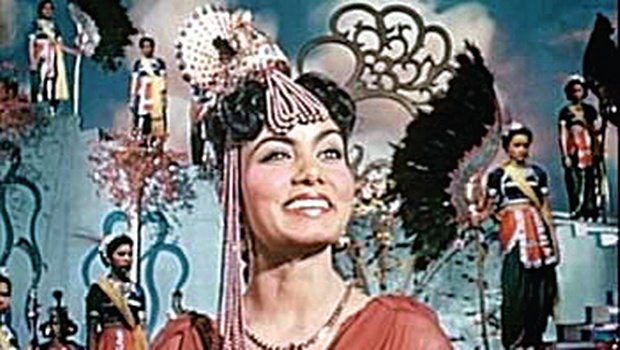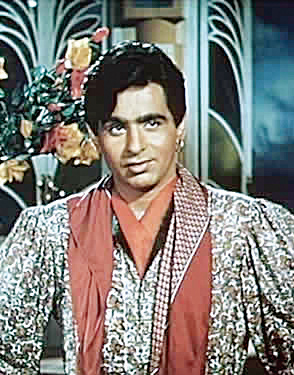There was a lot of Victor Fleming and Gone with the Wind in Mehboob Khan’s Aan even though the first film came in 1939 and the second in 1952. The sunsets, the panoramic sweeps of the earth and the sky joined by a twisted tree in the middle, long shots of horses running fretfully, women with wild eyes and big hair… all are faithfully echoed here and there are also dollops of the Errol Flynn bravado.
What is staggering though is the scale of the movie. Palaces and farms, valleys, waterfalls, fencing battles are captured in this first ever technicolor Indian film by cinematographer Faredoon A Irani with stunning clarity. This was a time when most films were shot in constricted spaces but this film breathes from end-to-end and seems to inhale and exhale the sky in big mouthfuls.
Mehboob was not known to cut corners when it came to mounting his films. If his Mother India was a peak experience for him and the stunned audience he served it to, Aan was a magnum-opus in its own right. Strangely though, his obvious fascination with his leading ladies got a lot of self-indulgent play-time here.
Nimi was to reappear in his 1954 psychological drama Amar as temptation incarnate with trembling rain-softened lips, eyes glittering with fear, adoration, revulsion and sensuality. Even the opening shots of her sleepily stretching and leaving her bed for the morning rituals of feeding her animals and chatting them up are provocative.
The camera cannot stop looking at her even for a second. In a film, where the pristine Madhubala was the other love interest, it was not surprising that the repressed man in the overly-fastidious Dilip Kumar falls for Nimi’s rusticity. Like Thomas Hardy’s Tess, she is an innocent temptress who has no idea what effect she has on men. In Aan too, though she is treated like a playmate by Dilip Kumar, the camera follows her everywhere and as she teases the villain Premnath by singing and dancing next to his car defiantly, you know she is not to be taken lightly.
Watch her in the dance sequence in Prem Nath’s den. Her eyes are sweet poison, her unruly hair is everywhere and even in a badly choreographed scene, she writhes and sways like a woman who can destroy any man who dares to lock his destiny with her. And so when the film released, Nimi got four offers from Hollywood and turned them all down because she had issues with how American film-makers approached passion.
Mehboob had obviously given the following instructions to both Nimi and Nadira, “Think Vivien Leigh..make your eyeballs POP!” And both women do just that in the film and scream like banshees.
In a bizarre dream sequence that has Tim Burton’s brand of madness, we see Nadira dressed as Cleopatra, Nimi as a reclining princess, Dilip Kumar as a bone of contention, loads of dancers and ‘extras’ dancing to a baffling mix of Oriental and Eastern melodies,but it is all so grand and operatic that no one really cares about the purpose of it all.
The story that veers between The Taming of the Shrew and a battle over a kingdom gives us blatantly sexist dialogues like, “Tum ek aurat ho aur ek mard ke rehmo qaram pe ho,” (you are a woman and at the mercy of a man) but the push and pull between Nadira’s princess Rajashree and Dilip Kumar’s Jai Tilak shows us where a lot of romances like Dil Hai Ki Manta Nahin and QSQT took their cues from.
The film liberated Dilip Kumar from the albatross of tragedy that had weighed him down to the point of acute depression. You could see just how much fun he had fencing with Prem Nath, riding the horses and fighting dirty with Nadira. The film celebrated excess unabashedly and immortalised the formulaic triangle of a sacrificing girl who must die, a hero who loves his mother, his motherland and the rich and bratty heroine…(in that order) but only after she has been coaxed out of her riding breeches and wrapped in a sari.
Reema Moudgil works for The New Indian Express, Bangalore, is the author of Perfect Eight, the editor of Chicken Soup for the Soul-Indian Women, an artist, a former RJ and a mother. She dreams of a cottage of her own that opens to a garden and where she can write more books, paint, listen to music and just be silent with her cats.









 with
with